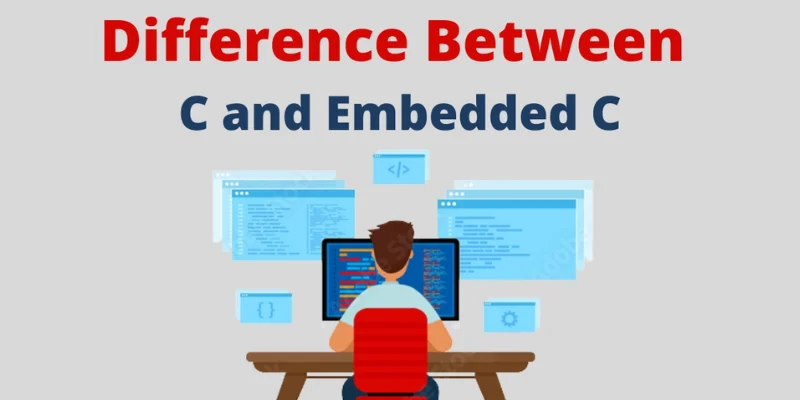
Embedded C is a specialised version of the C programming language, tailored for programming embedded systems such as microcontrollers and IoT devices. While it shares the same basic syntax and structure as standard C, it is designed to interact more closely with hardware. In contrast, C programming is widely used for general-purpose software development on desktops and operating systems. To gain expert knowledge in embedded systems, you can join Embedded System Courses in Chennai, which not only enhance your skills but also provide valuable career and placement support.
What is C Programming?
C is a general-purpose, high-level programming language designed in the early 1970s. Known for its simplicity, speed, and flexibility, it is widely utilised in system programming, operating systems, and application development. The C language allows low-level memory access, making it ideal for system-level software, such as device drivers and operating system kernels.
Key features of C programming include:
- Portable and structured
- Rich library support
- Strong control over hardware through pointers
- Widely supported across all platforms.
C programming is the foundation for many modern languages, including C++, Java, and Python. Enroll in C C++ Training in Chennai to gain hands-on experience and build a strong foundation in programming.
What is Embedded C?
Embedded C is an expansion of the C language that is used specifically for programming embedded systems. Embedded systems are a combination of hardware and software designed for specific tasks, such as controlling home appliances, automotive electronics, industrial machinery, and other applications.
Key features of Embedded C include:
- Works directly with hardware
- Optimised for microcontroller programming
- Uses fixed memory allocation
- Integrates with peripheral devices (sensors, timers, ports)
Embedded C programs often rely on accessing specific hardware registers and interacting with I/O ports. While it follows the same syntax and structure as standard C, it includes additional features like accessing specific memory locations and controlling timing mechanisms for real-time applications.
Linux Training in Chennai can help you understand how embedded systems interact with and operate on various operating systems.
Major Differences Between C and Embedded C
Let’s explore the key differences between these two popular programming languages:
1. Application Domain
- C Language: Used for general-purpose programming, including desktop applications and system software.
- Embedded C: Specifically tailored for programming embedded systems and microcontrollers.
2. Libraries and Tools
- C Language: Has a wide range of standard libraries for general computing.
- Embedded C: Uses hardware-specific libraries and tools like Keil, MPLAB, and AVR Studio.
3. Memory Management
- C Programming: Dynamic memory allocation is possible using malloc, calloc, etc.
- Embedded C: Often works with static memory due to hardware constraints and real-time requirements.
4. Hardware Interaction
- C Language: Limited direct interaction with hardware.
- Embedded C: Direct interaction with microcontroller registers, timers, and interrupts is essential.
5. Execution Environment
- C Programming: Runs on operating systems like Windows, Linux, and macOS.
- Embedded C: Runs without an OS or with a real-time operating system (RTOS) in an embedded environment.
If you want to gain expert knowledge in embedded systems, join our Training Institute in Chennai to enhance your skills and advance your career.
Why Learn Embedded C?
With the rise of the Internet of Things (IoT), automation, and smart devices, the demand for skilled embedded developers is on the rise. Learning Embedded C can help you:
- Work on real-time systems
- Develop firmware for consumer electronics
- Get into core electronics and embedded industries
- Understand microcontroller programming in depth.
Explore the core components of Linux to gain valuable insights for embedded system development.
How Are They Similar?
Despite the differences, C and Embedded C share several similarities:
- Same syntax and structure
- Use of variables, loops, functions, and conditionals
- Compilation process with minimal differences
- Both are compiled languages that translate source code into machine code
In summary, the difference between C and Embedded C lies mainly in their application and interaction with hardware. While C programming is suited for general software development, Embedded C is tailored for building efficient firmware for embedded systems.
Also check: Why are Embedded Systems Important in IoT?
